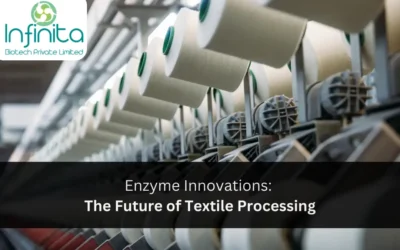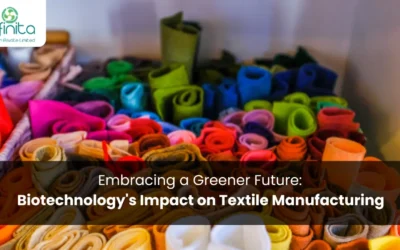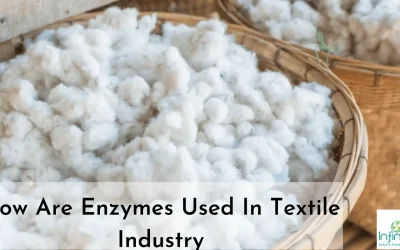In recent years, there has been a growing interest in sustainable fashion. With concerns about the environmental impact of the fashion industry, brands are seeking innovative ways to reduce their carbon footprint and create sustainable clothing. One such method that is gaining traction is the use of textile enzymes. These natural and biodegradable compounds are revolutionizing the way clothes are manufactured, making it easier for brands to produce sustainable and eco-friendly garments.
Understanding the Concept of Green Fashion
Green fashion refers to the production of clothing that is environmentally friendly throughout its lifecycle. This includes everything from the sourcing of raw materials to the manufacturing processes and distribution. The goal is to minimize the negative impact of fashion on the planet while still creating stylish and high-quality garments.
When it comes to green fashion, every step of the process is carefully considered. The sourcing of raw materials involves using sustainable options such as organic cotton, hemp, and bamboo. These materials are grown without the use of harmful pesticides and require less water and energy to produce. By opting for these eco-friendly materials, fashion brands are taking a step towards reducing their carbon footprint.
In addition to the materials used, the manufacturing processes in green fashion are also designed to be environmentally friendly. This means using energy-efficient machinery, implementing recycling and waste reduction programs, and ensuring that water usage is minimized. By adopting these sustainable practices, fashion brands are not only reducing their impact on the environment but also creating a healthier and safer working environment for their employees.
The Emergence of Sustainable Clothing Brands
In recent years, there has been a surge in sustainable clothing brands. These brands prioritize the use of organic and recycled materials, as well as ethical labor practices. By adopting sustainable practices, these brands are setting an example for the industry and paving the way for a greener future.
One of the key factors contributing to the emergence of sustainable clothing brands is the growing awareness among consumers. People are becoming more conscious of the environmental and social impact of their purchasing decisions. They are seeking out brands that align with their values and are willing to pay a premium for products that are ethically made and environmentally friendly.
Moreover, sustainable clothing brands are not only focusing on the materials and labor practices but also on the overall lifecycle of their products. They are designing garments that are durable and long-lasting, encouraging consumers to buy less and choose quality over quantity. This shift in consumer mindset is crucial in reducing the demand for fast fashion and promoting a more sustainable and circular fashion economy.
The Role of Consumer Demand in Green Fashion
Consumer demand plays a crucial role in driving the growth of sustainable fashion. Today’s consumers are more conscious of the environmental impact of their purchasing decisions and are actively seeking out brands that align with their values. As a result, sustainable clothing brands are gaining popularity and influencing the wider fashion industry.
With the rise of social media and the ease of access to information, consumers are becoming more educated about the environmental and social issues associated with the fashion industry. They are demanding transparency from brands and want to know where and how their clothes are made. This increased awareness is putting pressure on fashion brands to adopt more sustainable practices and be accountable for their actions.
Furthermore, consumer demand is not limited to the end product. It extends to the entire supply chain, from raw material sourcing to packaging and shipping. Consumers are looking for brands that use eco-friendly packaging materials, minimize waste, and reduce their carbon emissions during transportation. By supporting these sustainable practices, consumers are driving positive change in the fashion industry and encouraging more brands to follow suit.
In conclusion, green fashion is not just a trend but a necessary shift towards a more sustainable and responsible industry. From the sourcing of materials to the manufacturing processes and consumer demand, every aspect of the fashion lifecycle is being reevaluated and transformed. By embracing green fashion, we can create a future where style and sustainability go hand in hand.
The Science Behind Textile Enzymes
Textile enzymes are natural proteins that act as catalysts in chemical reactions. In textile manufacturing, enzymes are used to modify fabrics and enhance various textile processes.
Enzymes are fascinating biological molecules that have been harnessed by humans for various industrial applications. In the context of textile manufacturing, enzymes play a vital role in facilitating processes such as desizing, bio-polishing, and stone-washing. These processes help to achieve desirable fabric characteristics, such as softness, color fading, and denim distressing.
The Function of Enzymes in Textile Manufacturing
Enzymes are eco-friendly alternatives to traditional chemicals and are often more effective. They possess remarkable specificity, meaning that they can selectively target certain compounds or structures in fabrics without affecting the overall fabric integrity. This specificity allows textile manufacturers to achieve precise modifications and enhancements, resulting in high-quality products.
One of the key functions of enzymes in textile manufacturing is desizing. Desizing is the process of removing the sizing agents that are applied to fabrics during the weaving process. Sizing agents, such as starch, are used to improve the weaving efficiency and prevent yarn breakage. However, these sizing agents need to be removed before further processing. Enzymes, such as amylases, are used to break down the starch molecules, making it easier to remove them from the fabric.
Another important application of enzymes in textile manufacturing is bio-polishing. Bio-polishing is a process that improves the fabric’s surface smoothness and reduces pilling. Pilling occurs when loose fibers on the fabric surface tangle together, forming small balls or pills. Enzymes, such as cellulases, are used to selectively remove these loose fibers, resulting in a smoother and more durable fabric.
Stone-washing is a popular technique used to give denim fabrics a worn-out and vintage look. Traditionally, this process involved the use of pumice stones, which caused significant fabric damage and required large amounts of water. Enzymes, such as cellulases and proteases, have revolutionized the stone-washing process by providing a more controlled and environmentally friendly alternative. These enzymes selectively break down the indigo dye and protein fibers on the denim surface, creating the desired distressed appearance.
The Environmental Impact of Traditional Textile Processes
Traditional textile processes often involve the use of harsh chemicals that have a detrimental impact on the environment. These chemicals can pollute water sources, contribute to greenhouse gas emissions, and harm both human health and ecosystems. The textile industry has been under scrutiny for its environmental footprint, and there is a growing demand for sustainable alternatives.
By replacing traditional chemicals with enzymes, textile manufacturers can significantly reduce their environmental impact. Enzymes are biodegradable and do not persist in the environment, unlike many synthetic chemicals. This means that they do not accumulate in water sources or contribute to long-term pollution. Additionally, enzymes require lower operating temperatures and shorter processing times, resulting in reduced energy consumption and greenhouse gas emissions.
Furthermore, enzymes offer improved worker safety and reduced health risks compared to traditional chemicals. Many of the chemicals used in textile processes are toxic and can pose health hazards to workers. Enzymes, on the other hand, are generally safe to handle and do not pose significant risks to human health when used properly.
In conclusion, the use of enzymes in textile manufacturing is a game-changer. These natural proteins bring numerous benefits, including enhanced fabric properties, reduced environmental impact, and improved worker safety. As the textile industry continues to prioritize sustainability and eco-friendly practices, enzymes are poised to play an increasingly important role in shaping the future of textile manufacturing.
The Intersection of Textile Enzymes and Sustainable Fashion
The use of textile enzymes is a game-changer for sustainable fashion. By incorporating enzymes into their production processes, brands can achieve a variety of benefits that align with their sustainability goals.
The Benefits of Enzyme-Based Textile Production
Enzyme-based textile production offers numerous benefits. Firstly, it reduces water consumption by requiring fewer rinse cycles compared to traditional processes. Secondly, enzymes are biodegradable, which means they break down naturally and do not accumulate in the environment. Moreover, enzymes also enable greater precision and control in fabric processing, resulting in higher quality and more consistent products.
Challenges and Solutions in Implementing Enzyme Technology
While the use of textile enzymes brings many advantages, there are also challenges in implementing this technology. Enzymes can be sensitive to environmental conditions and require careful formulation and handling. Furthermore, the costs associated with enzyme production and sourcing can be higher compared to traditional chemicals. However, with the increasing demand for sustainable fashion, the industry is investing in research and development to overcome these challenges and make enzyme-based textile production more accessible and cost-effective.
The Future of Green Fashion and Textile Enzymes
As the demand for sustainable clothing continues to grow, the future of green fashion looks promising. Textile enzymes are at the forefront of this movement, and ongoing research and innovation are expanding their applications and potential impact on the fashion industry.
Innovations in Enzyme Technology for Textiles
Researchers and manufacturers are constantly exploring new enzymes and enzyme combinations to maximize their effectiveness in textile processes. Innovations in enzyme technology hold the potential for even more sustainable and efficient fabric production.
The Potential of Enzymes in Revolutionizing the Fashion Industry
Enzymes have the potential to revolutionize the fashion industry by completely transforming the way clothes are manufactured. With their ability to improve fabric properties, reduce waste, and minimize environmental impact, enzymes are paving the way for a future where sustainable fashion is the norm, rather than the exception.
In conclusion, green fashion and textile enzymes are working hand in hand to create a more sustainable and eco-friendly fashion industry. Through the use of enzymes, brands can reduce their environmental footprint while still producing stylish and high-quality garments. As consumer demand for sustainable fashion continues to rise, the future looks bright for the intersection of green fashion and textile enzymes.







